As the new school year approaches, families and educators are getting ready for a fresh start. For AAC (Augmentative and Alternative Communication) users, thoughtful preparation can make a world of difference. Whether your child is just starting school or returning with a new device or communication system, these simple but powerful strategies can help set the stage for success.
Here are 8 practical ways to support AAC users as they head back to school:
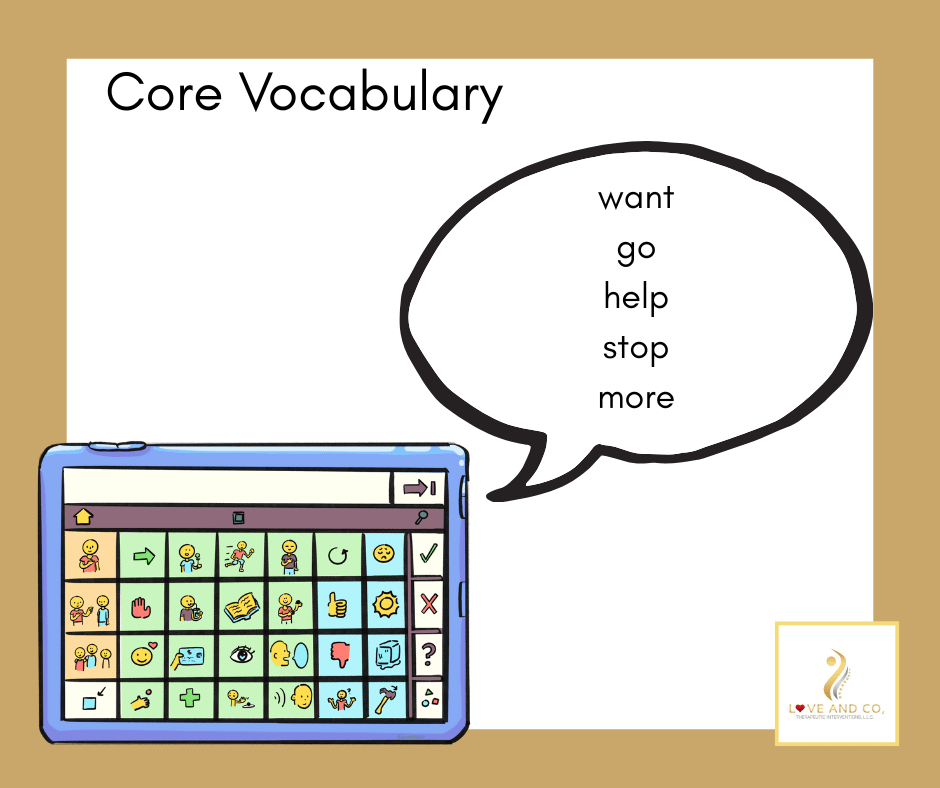
1. Program Core + Fringe Vocabulary
Start by making sure the AAC system includes both core vocabulary (words used across many settings) and school-specific fringe vocabulary. Core words should always be easily accessible, think:
- want
- go
- help
- stop
- more
Then, add relevant fringe words that your child is likely to use in the school setting, such as:
- Recess
- Desk
- Pencil
- Teacher
- Lunchbox
These customizations help ensure your child can talk about what’s happening throughout their school day.
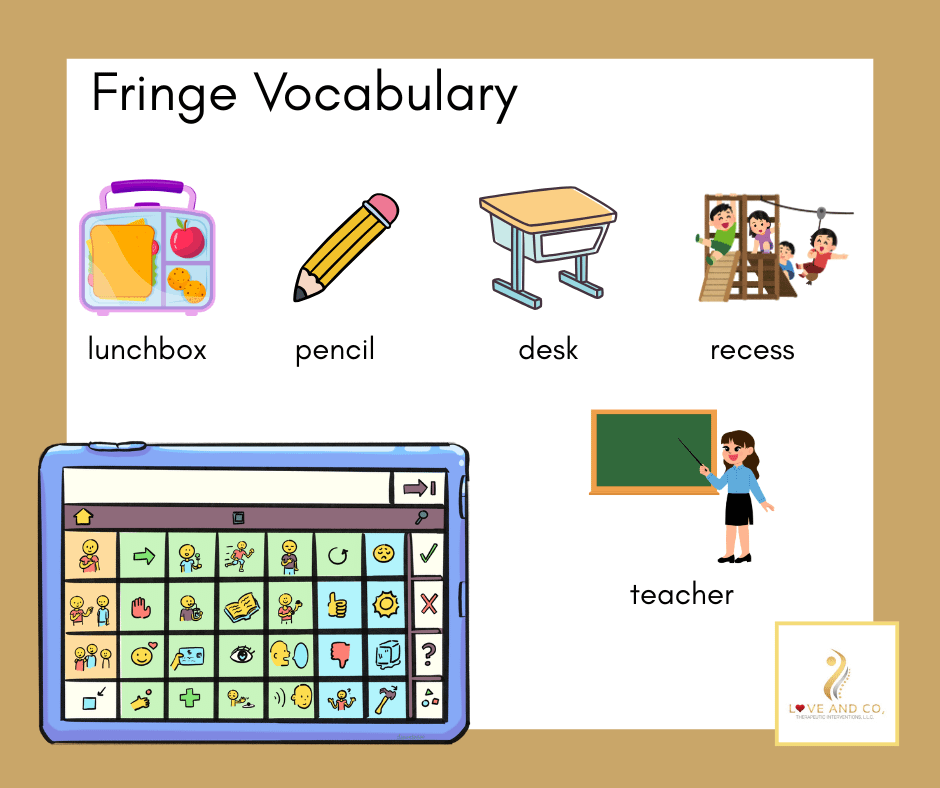
2. Quick-Access School Phrases
Include a dedicated folder or page for frequently used school phrases. This allows your child to communicate quickly and clearly during routines and transitions. Some helpful examples include:
- “I need help.”
- “Can I play?”
- “Where is the bathroom?”
- “I’m not finished yet.”
- “Can you say that again?”
- “I don’t understand.”
These phrases empower students to advocate for themselves and stay engaged in learning.
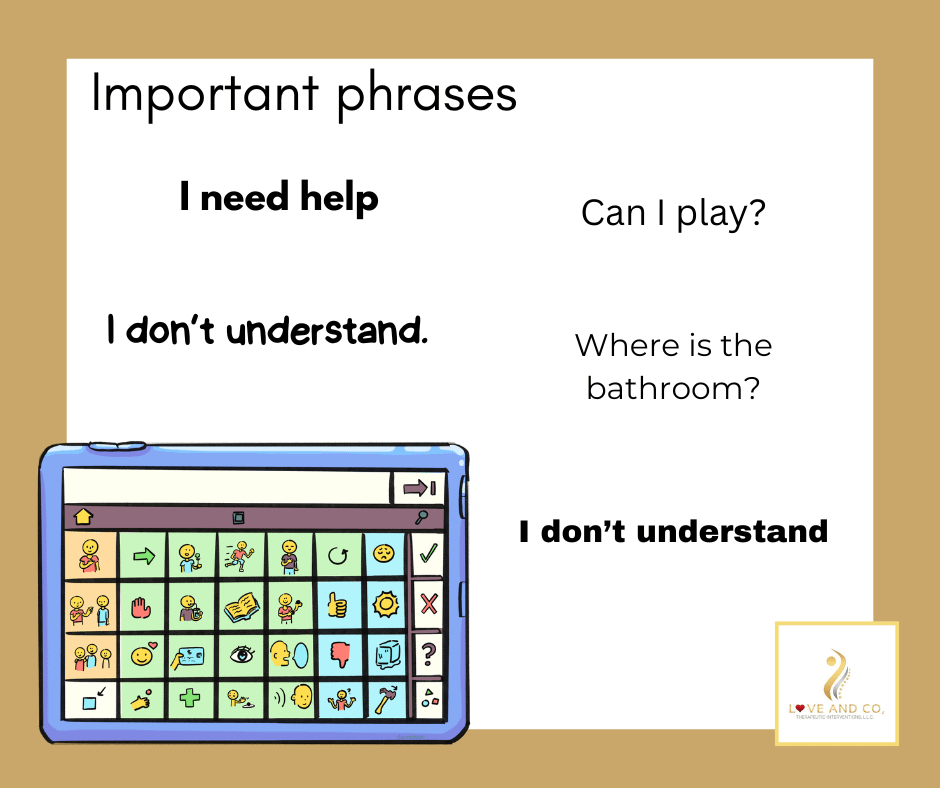
3. Meet the Teacher with AAC
Before the first day, arrange a meet-and-greet with the teacher. Encourage your child to use their AAC to:
- Say their name (“Hi, my name is _______.”)
- Share favorite things
- Explain how they communicate
This builds familiarity, reduces first-day jitters, and promotes self-advocacy from the very start. Also, ask the teacher for input on words and phrases to add to the device and offer them the opportunity to get familiar with your child’s device.
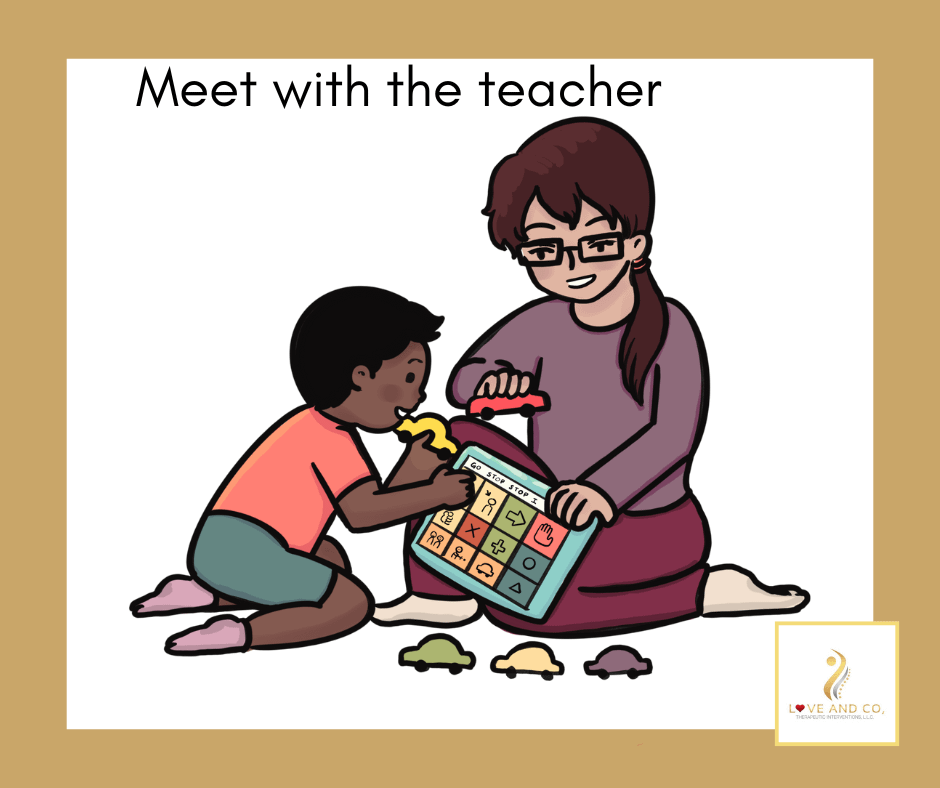
4. Routine Boards & First-Then Visuals
Support transitions and routines with first-then boards that incorporate AAC language. For example:
- “First math, then break.”
- “First writing, then play.”
Pair these with visual schedules and modeled language to increase predictability and understanding.
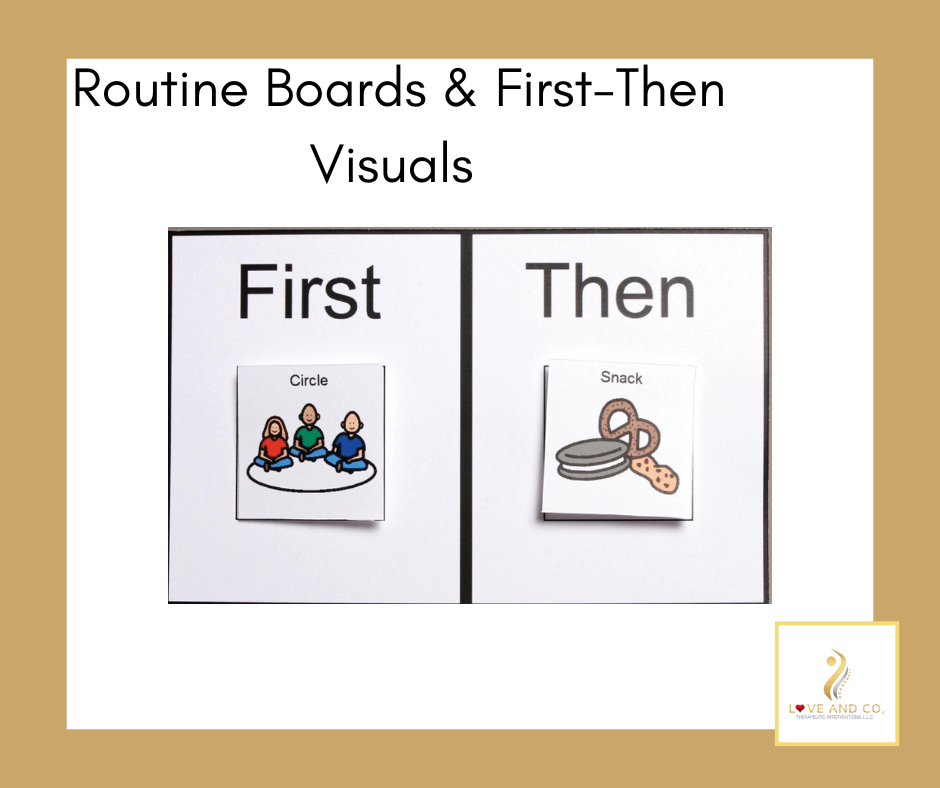
5. Model, Model, Model!
AAC learning happens best when adults and peers consistently model how to use it throughout the day. Try:
- Narrating routines: “We’re going to circle time.”
- Responding to communication attempts: “Oh! You said you want more!”
The more your child sees AAC in action, the more confident and independent they’ll become in using it.
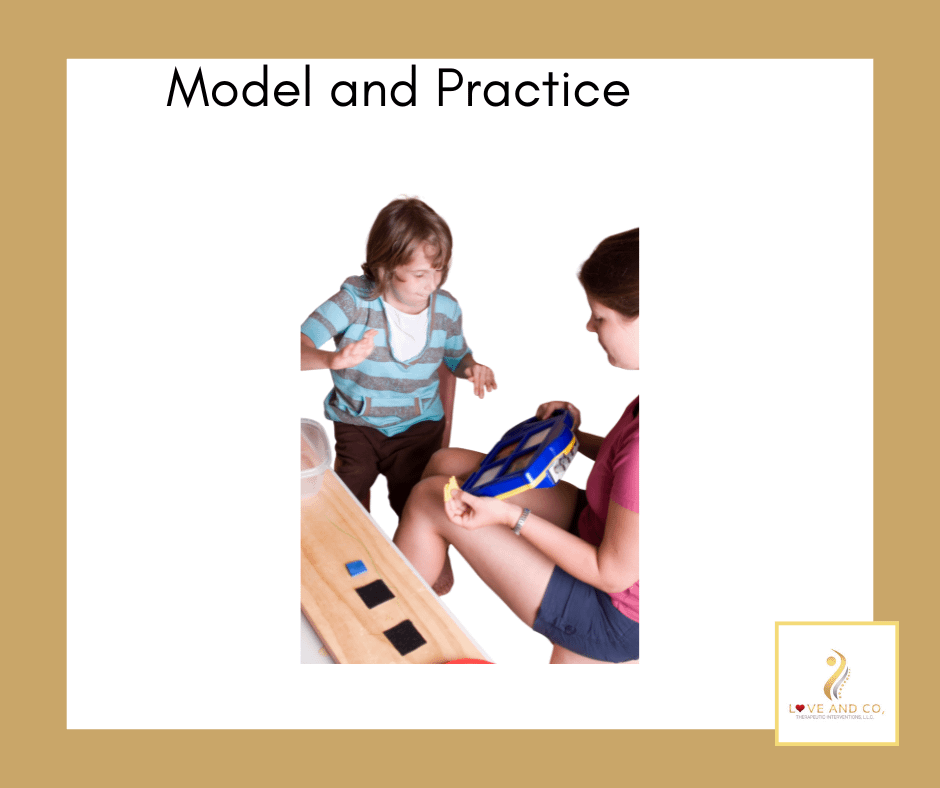
6. Emergency & Emotional Support Phrases
Don’t forget to program essential emergency and emotional phrases such as:
- “I’m hurt.”
- “I feel sick.”
- “I need a break.”
- “I’m mad/sad/happy.”
Use emotion icons or a simple mood meter (like a 1–5 scale) to support emotional regulation and clear communication.
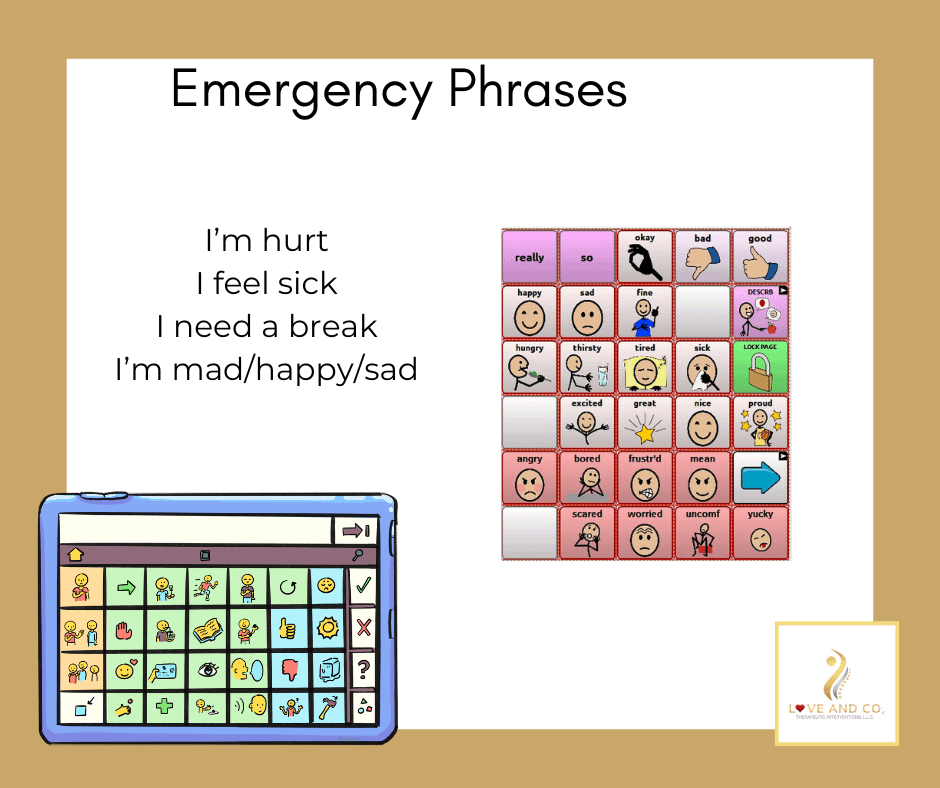
7. Practice Functional School Routines
Rehearse common school situations at home to build fluency and reduce anxiety. Practice how to:
- Ask to sharpen a pencil
- Tell a teacher about a missing item
- Line up for recess
- Answer a question with “yes” or “no”
Even a few minutes of role-play can boost confidence and communication skills.
8. Keep It Consistent
Consistency is key. Make sure the AAC device has the same vocabulary layout, voice, and settings across home and school. This helps prevent confusion and encourages generalization of communication skills across environments.
Final Thoughts
Back-to-school season can feel overwhelming, but with a little planning and a lot of modeling, you can help your AAC user step into the classroom feeling confident, capable, and ready to connect. Communication is a right, not a privilege, and every child deserves the tools and support to use their voice in school and beyond.

Love & Co. Therapeutic Interventions
referrals@loveandcompanytherapies.com
1 (941) 557-3881
1 (941) 264-8641
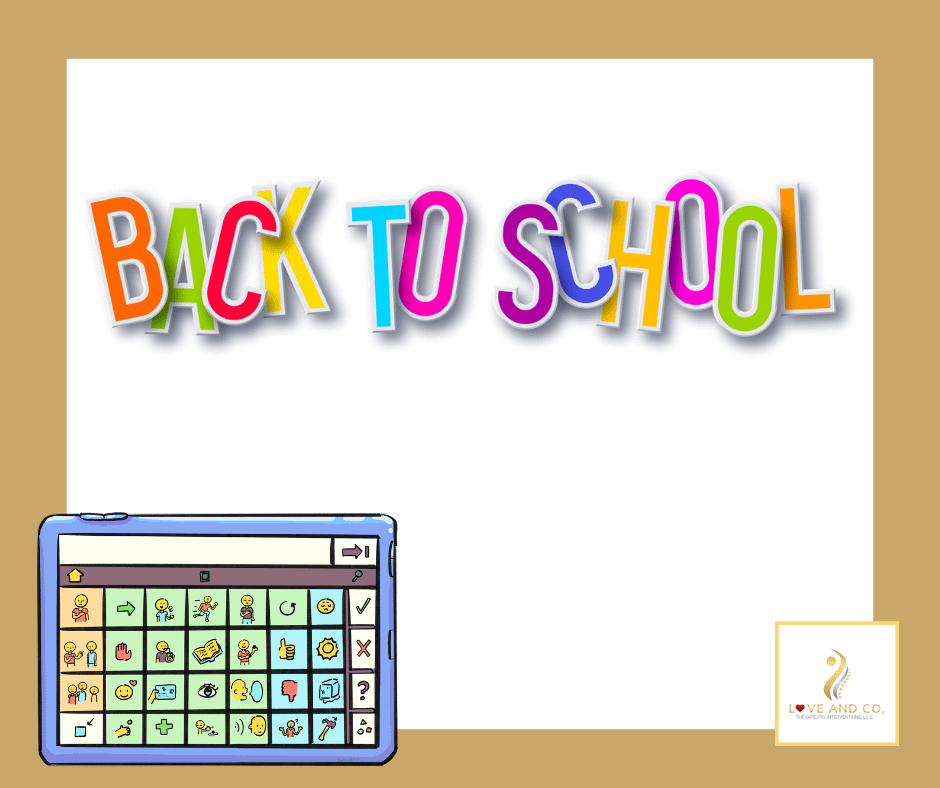
Leave a Reply